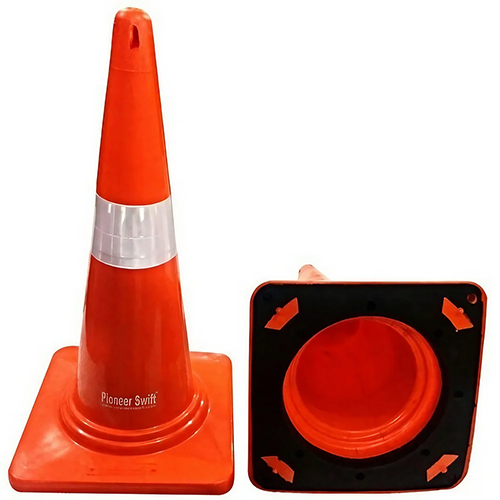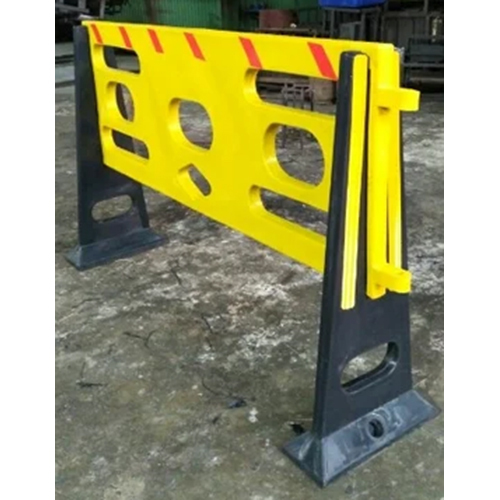plastic road barrier
Product Details:
- Weight 350,450,650Kg Kilograms (kg)
- Warranty Yes
- Material PVC
- Color Red
- Function Manual
- Size Different Size
- Click to View more
plastic road barrier Price And Quantity
- 3500.0 INR/Unit
- 10 Unit
plastic road barrier Product Specifications
- Manual
- PVC
- Different Size
- Red
- 350,450,650Kg Kilograms (kg)
- Yes
plastic road barrier Trade Information
- Cash in Advance (CID)
- 5 Unit Per Month
- 2-7 Days
- All India
Product Description
Basic Details of Plastic Road Barriers:
1. Purpose:
-
Traffic Control: To guide or divert traffic safely, particularly in construction zones, roadworks, or accidents.
-
Safety Protection: Used to protect both drivers and workers by creating physical separation between traffic and hazardous work areas.
-
Delineation: Mark the boundaries of lanes, parking lots, or other areas where vehicles should not pass.
2. Key Features:
-
Material: Made from high-density polyethylene (HDPE) or polypropylene, which makes them lightweight, weather-resistant, and durable.
-
Design: Typically features a modular design, allowing barriers to be linked together for creating longer barricades or fences.
-
Water and Sand Filling: Many plastic road barriers have internal compartments that can be filled with water or sand to provide additional weight and stability, especially in windy conditions.
-
Reflective Markings: Often include reflective tape or stickers for visibility at night, increasing safety for both road users and workers.
-
Compact and Lightweight: Easier to transport and install compared to traditional concrete barriers, while still offering sufficient protection.
-
Impact Resistance: Designed to absorb impact from vehicles, reducing the damage to vehicles and minimizing injury risks to drivers.
-
Color: Usually bright orange, yellow, or red for high visibility, though some are available in other colors depending on specific needs.
3. Types of Plastic Road Barriers:
-
Water-Filled Barriers: These barriers have large cavities that can be filled with water to provide added weight and stability. They are particularly used in areas where the barrier needs to be easily relocated but still require a high level of resistance to forces.
-
Sand-Filled Barriers: Similar to water-filled barriers, but they can be filled with sand for additional weight. These barriers are often used temporarily in construction zones or during road events.
-
Traffic Cones and Road Dividers: Smaller plastic barriers or cones used to separate lanes, mark construction areas, or create temporary lane shifts.
-
Jersey Barriers: Though traditionally made from concrete, there are also plastic versions of these long barriers designed to divide lanes on highways or separate traffic from construction zones.
4. Applications:
-
Construction Zones: To protect road workers and mark off areas where vehicles should not enter.
-
Event Management: Used during events like marathons, festivals, or parades to control crowds and ensure public safety.
-
Traffic Control: Separating lanes of traffic, marking off accident zones, or creating barriers during roadwork.
-
Parking Lot Safety: To delineate spaces and prevent vehicles from entering restricted or unsafe areas.
-
Roadway Dividers: Used to divide traffic lanes or create barriers in busy or dangerous roadways.
5. Advantages:
-
Portability: Much lighter than concrete barriers, making them easier to transport and set up without heavy machinery.
-
Durability: Resistant to extreme weather conditions such as heat, cold, rain, and UV exposure, ensuring longevity.
-
Safety: Provides effective traffic control while being designed to minimize damage in the event of a collision.
-
Cost-Effective: Lower cost and maintenance compared to concrete or metal barriers, especially for temporary installations.
-
Ease of Installation and Removal: Quick to set up and remove without requiring specialized labor or equipment.
-
Environmentally Friendly: Often made from recyclable plastic materials, making them more eco-friendly than alternatives like concrete barriers.
6. Limitations:
-
Weight: While lighter than concrete, plastic barriers still require filling (with sand or water) for added weight, which might not make them suitable for all applications, such as high-speed highways.
-
Impact Resistance: May not offer the same level of impact resistance as concrete barriers, especially at high speeds or in extreme conditions.
-
Durability Under Extreme Impact: They may crack or break upon significant impact from large vehicles or during extreme weather events.

Price:
- 50
- 100
- 200
- 250
- 500
- 1000+









 Send Inquiry
Send Inquiry Call Me Free
Call Me Free